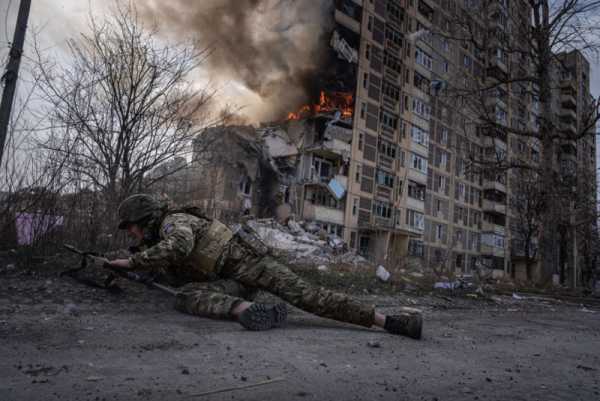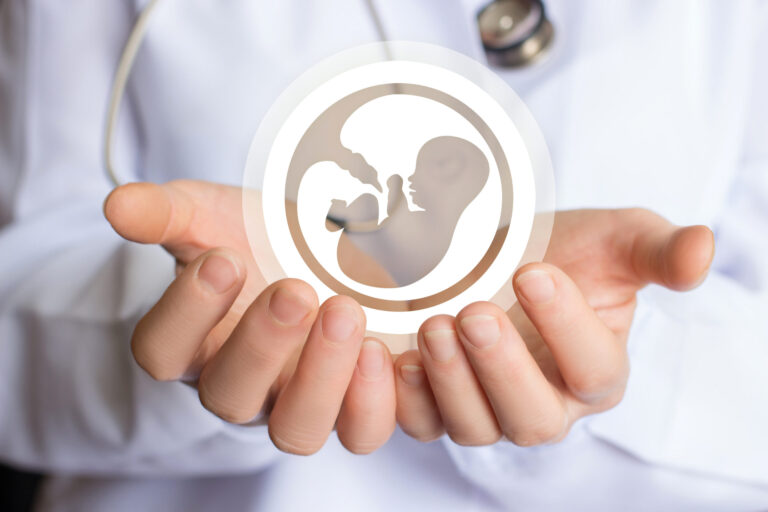
Around 150,000 residential buildings have been damaged or destroyed so far (Photo: Image Bank of War in Ukraine)
Although Vladimir Putin has failed in his plan to crush Ukraine with military force, his ambition to destroy its independence is undiminished. As Russia’s latest offensive falters on the outskirts of Bakhmut, the Kremlin is pivoting towards a strategy of economic attrition intended to turn Ukraine into a failed state.
By cutting it off from foreign markets, deterring inward investment and preventing the return of refugees, Putin believes he can still force Ukraine back into Russia’s sphere of influence, achieving by stealth what his troops have failed to deliver on the battlefield.
-

The ruined city of Bahkmut, 26 March 2023 (Photo: Image Bank of War in Ukraine)
EU and US policy must now undergo an equivalent transformation. The need to support the modernisation of Ukraine’s armed forces will remain but must be matched by a financial plan capable of guaranteeing the country’s long-term viability.
Central to this must be the revival of Ukraine’s economy and the reconstruction of its shattered infrastructure. The process of rebuilding must begin even as the fighting continues, demonstrating the will of Ukraine’s international partners to stand by it.
The task is already a huge one. In addition to the loss of more than 50 percent of Ukraine’s energy infrastructure, and large parts of its transport network and industrial capacity, around 150,000 residential buildings have been damaged or destroyed so far. The costs of reconstruction have been put at somewhere between $411bn to $1 trillion [€378bn to €919bn], and rising. This invites big questions about how these sums can be raised and disbursed.
No progress has been made in agreeing the structures needed to organise the reconstruction effort since 58 countries took part in the Ukraine Recovery Conference last summer.
That must change by the time the conference reconvenes in London in June. In particular, the Ukrainian government will need to yield in its desire to control the distribution of funds raised by international donors.
Hard-pressed voters in Europe and America will not consent to the provision of aid unless they have confidence that it will be spent on those who need it most. The task will need to be undertaken by an international agency in which donor countries have significant powers of oversight and influence, perhaps modelled on the European Agency for Reconstruction, which administered the EU’s aid programme for Kosovo.
Securing the necessary funds to begin reconstruction will be the next challenge. The EU and others are already committed significant sums, but there are limits, both political and financial, to the assistance that is likely to be provided as many countries wrestle with their own economic problems. Private investment will provide another source finance, and this can be encouraged by accelerating Ukraine’s EU accession and providing the long-term security assistance needed to build business confidence.
Most of the reconstruction costs obviously ought to be borne by Russia.
With large amounts of Russian assets currently frozen in the West, some want this to begin even without Russia’s consent. The $300bn of frozen Russian central bank reserves is one option, but there are significant legal obstacles as well as concerns about the precedent of seizing sovereign property.
The position of the European Commission is that these assets could only be used for the reconstruction of Ukraine if Russia agreed as part of an eventual peace settlement, linked to the lifting of sanctions. Either way, these funds are unlikely to be available in the short-term.
Sign up for EUobserver’s daily newsletter
All the stories we publish, sent at 7.30 AM.
By signing up, you agree to our Terms of Use and Privacy Policy.
The private assets of wealthy Russians frozen since the start of the war provide another potential resource. These are thought to total around $60bn in the EU, US and UK combined.
Yet even seizing these assets will require changes to the law in each jurisdiction and still be subject to challenge in court. In each case seizure will need to be linked to a specific, provable crime. The recent decision of the EU General Court to overturn sanctions on the mother of Kremlin oligarch and mercenary leader, Yevgeny Prigozhin, illustrates the difficulty.
‘Repentance Fund’?
One way to speed up the flow of funds would be to seek voluntary donations from oligarchs to a ‘Repentance Fund’, as suggested by Davyd Arakhamia, the leader of president Volodomyr Zelensky’s party in the Ukrainian parliament.
A precedent for this already exists following the UK’s decision to unfreeze the $2.6bn proceeds of Roman Abramovich’s sale of Chelsea Football Club on condition that it be donated to humanitarian causes in Ukraine. The conditions for a fund of this type would need to be tough to prevent pro-Kremlin oligarchs buying their way out of sanctions. All the unfrozen money would need to go to Ukraine, Putin’s war would need to be unequivocally condemned and there could be no immunity for those guilty of crimes.
One way or another, funds will need to start flowing soon. The Ukraine conflict is about to enter a new phase; one in which non-military factors are set to prove decisive. Key among them will be the battle for Ukraine’s economic survival. All of the support that has been given so far will have been wasted unless it’s a battle we equip them to win.
Source: euobserver.com



